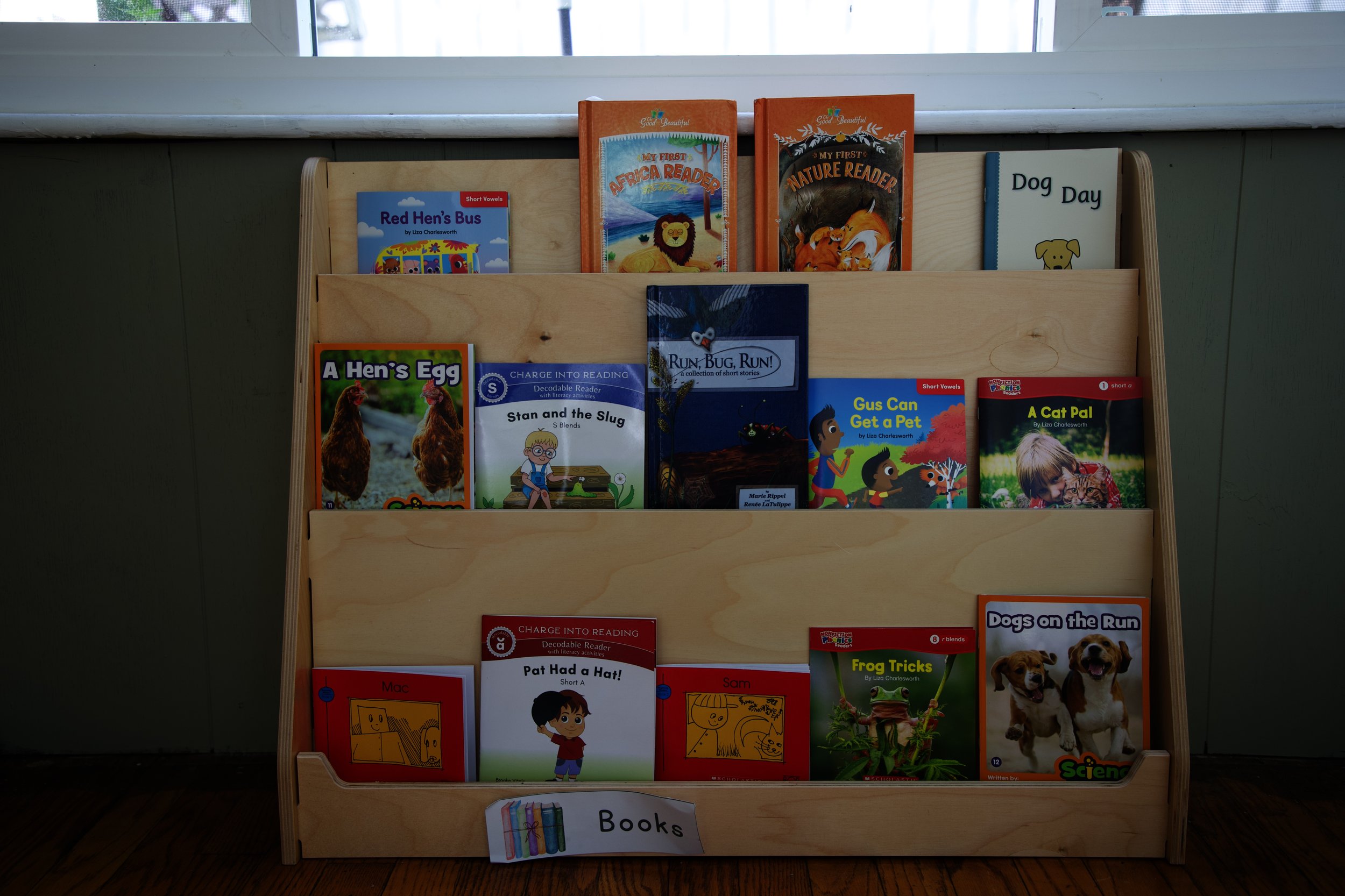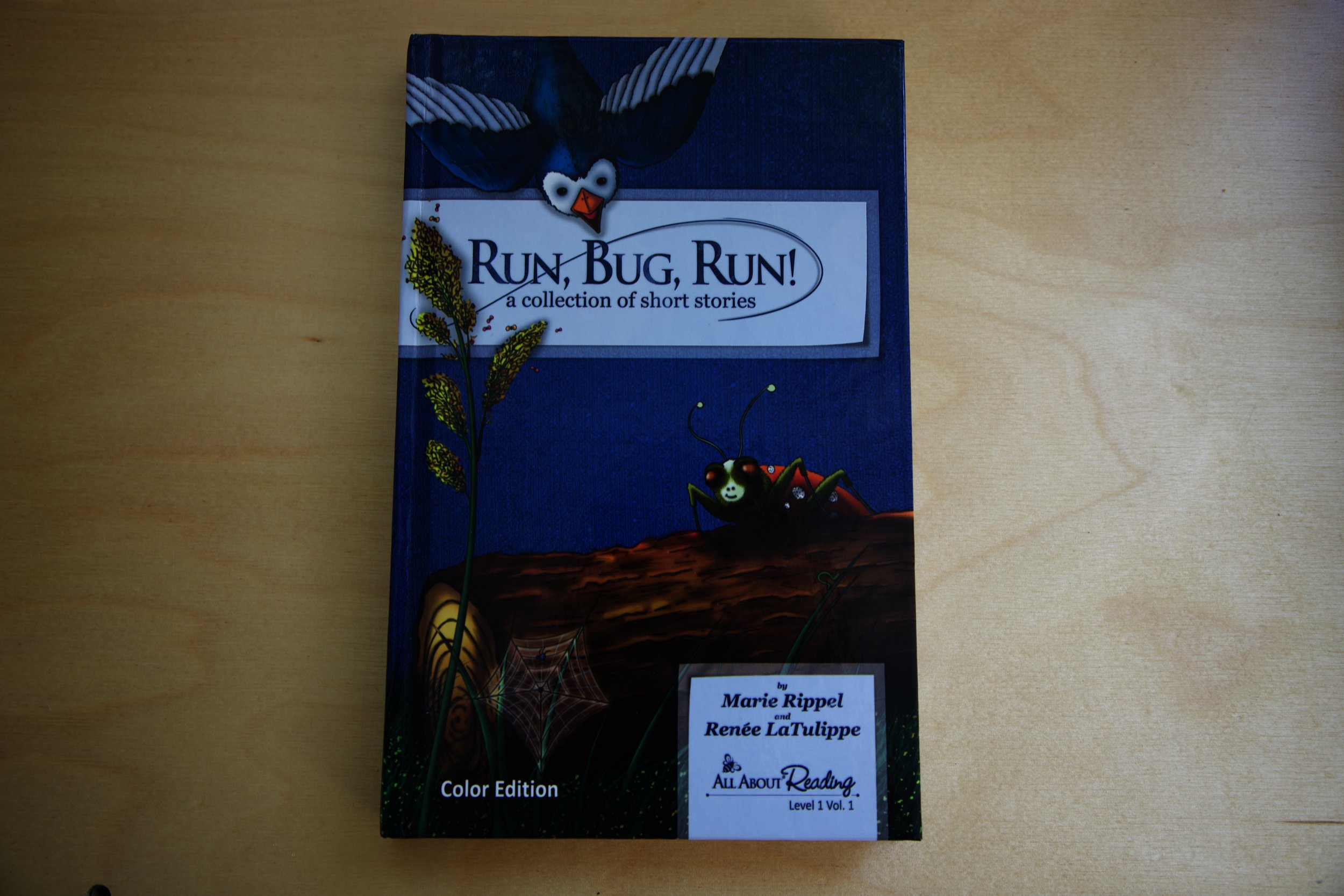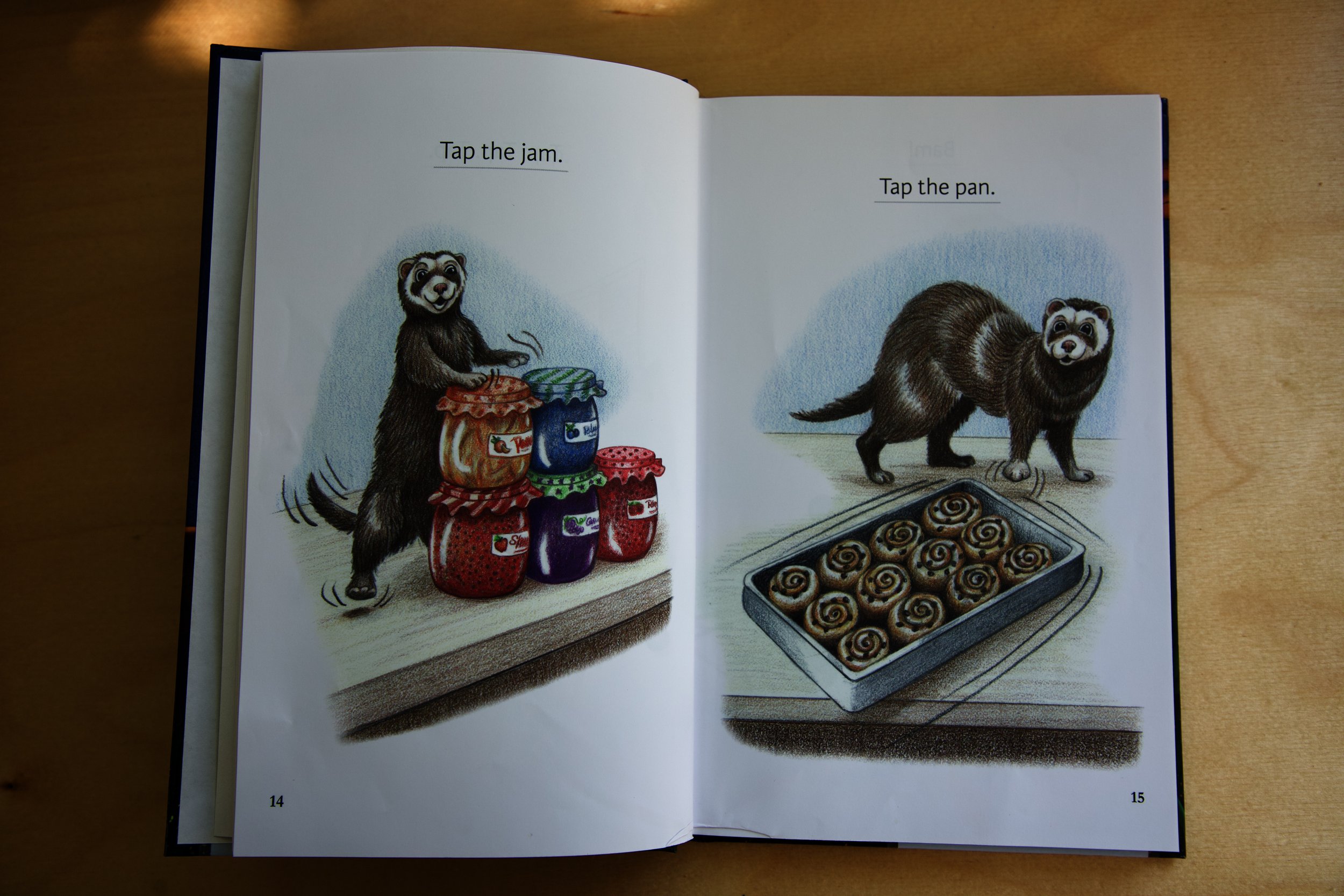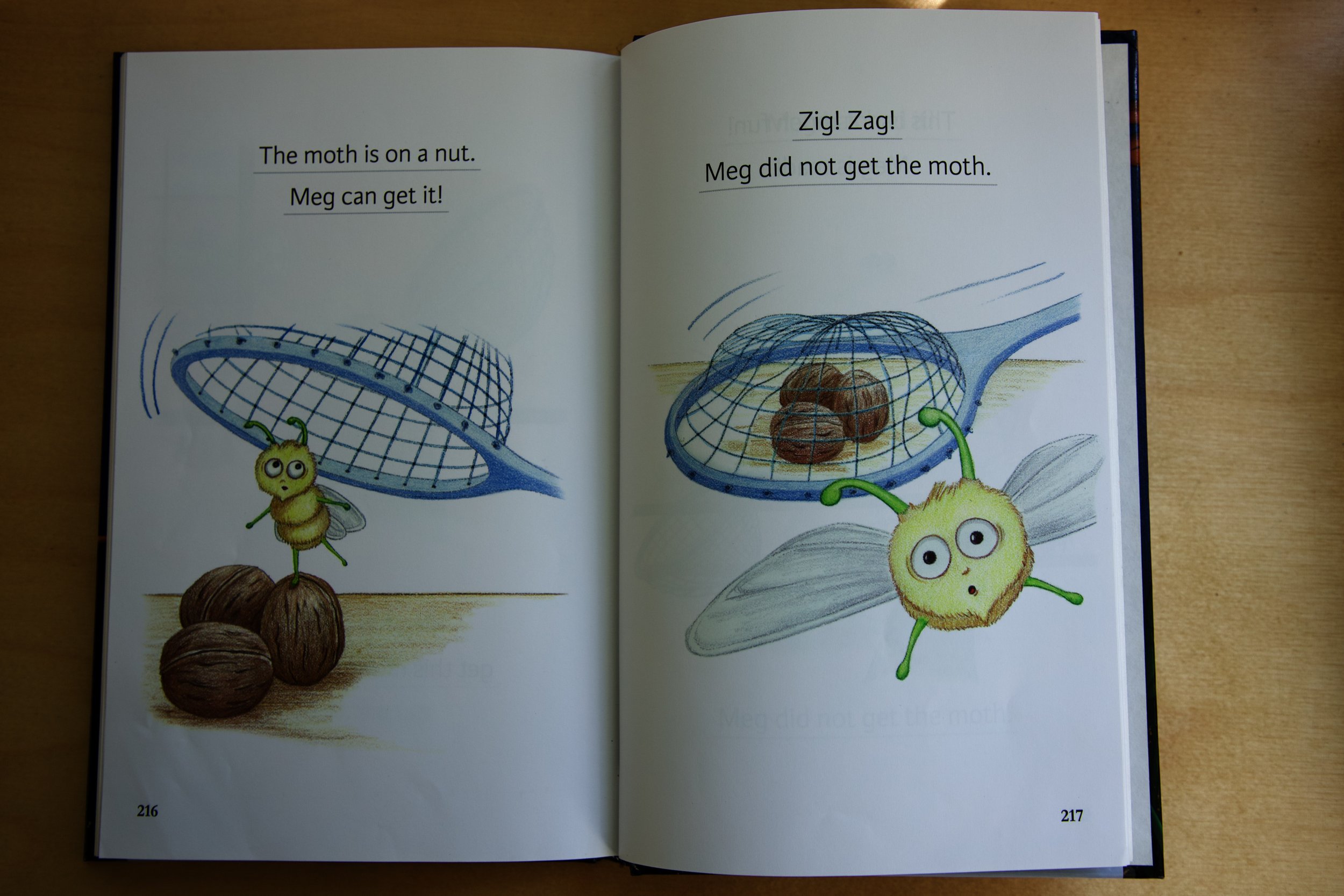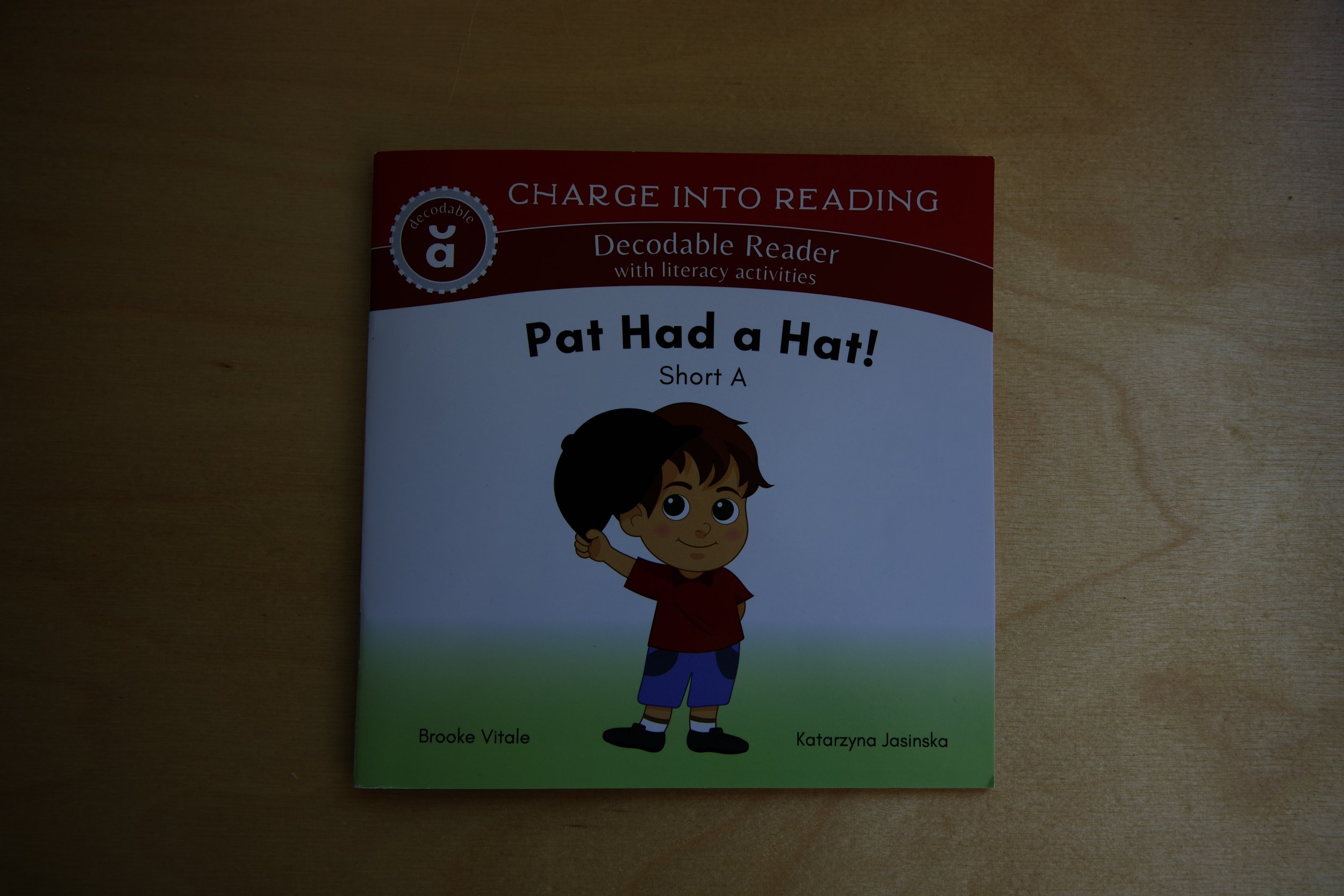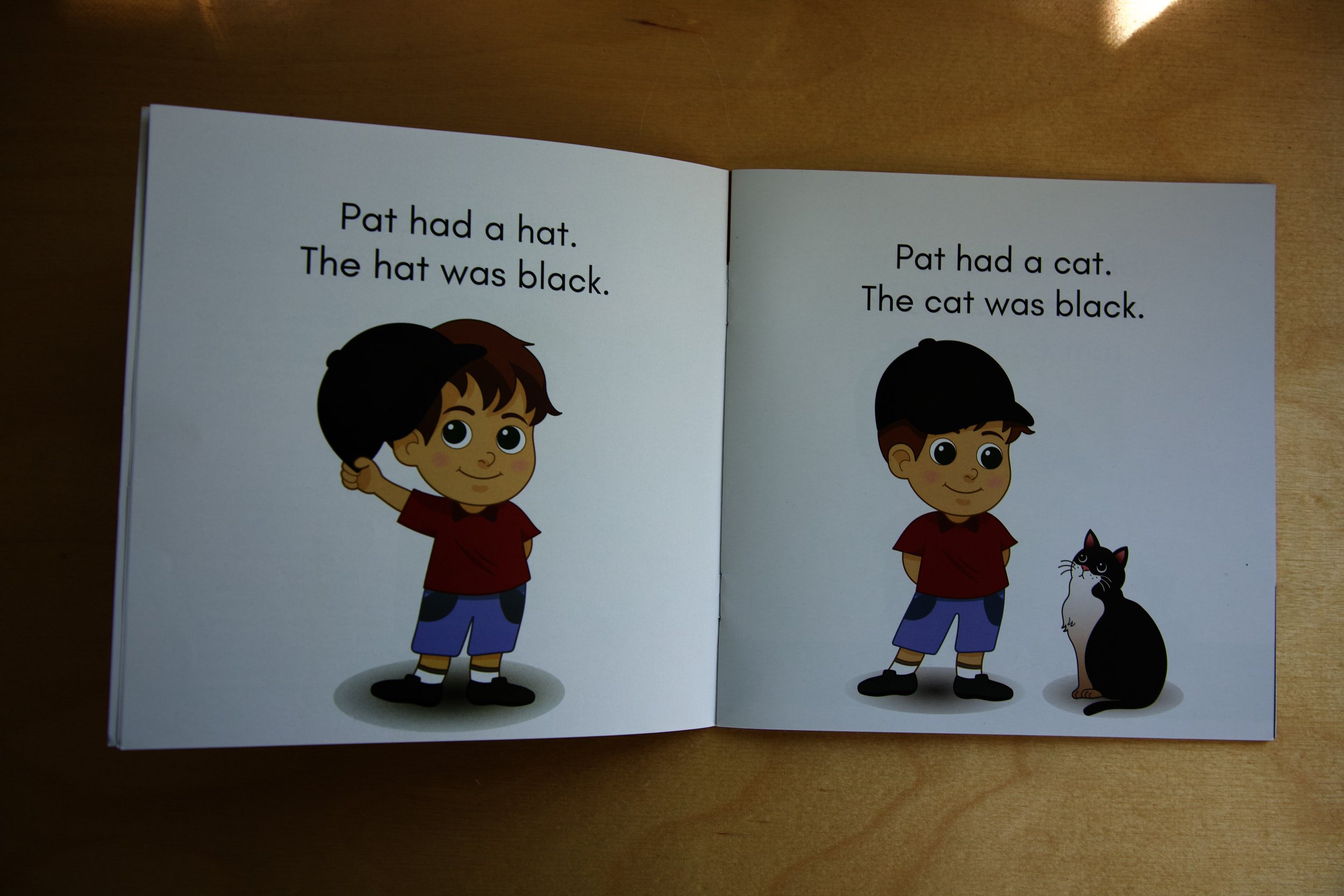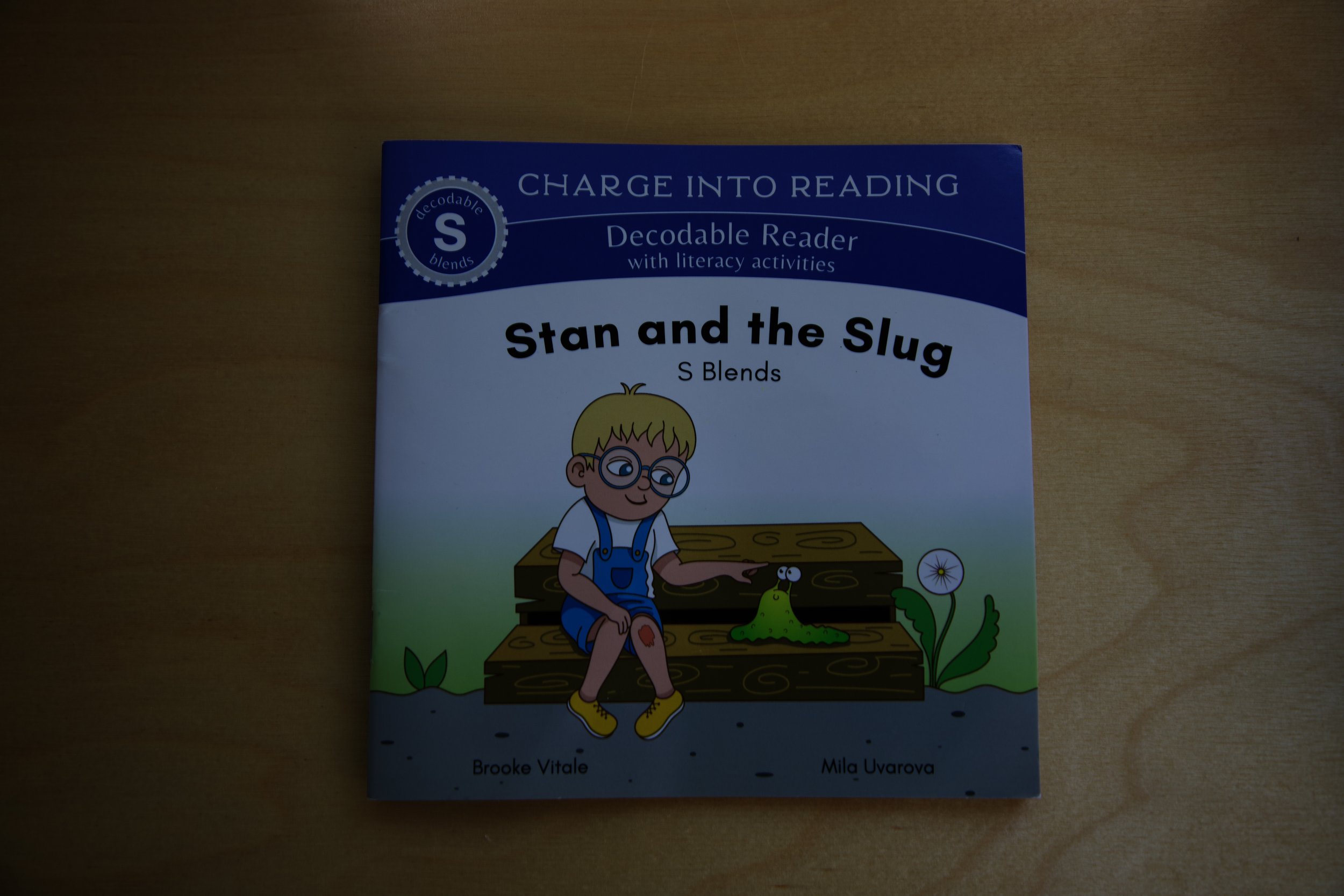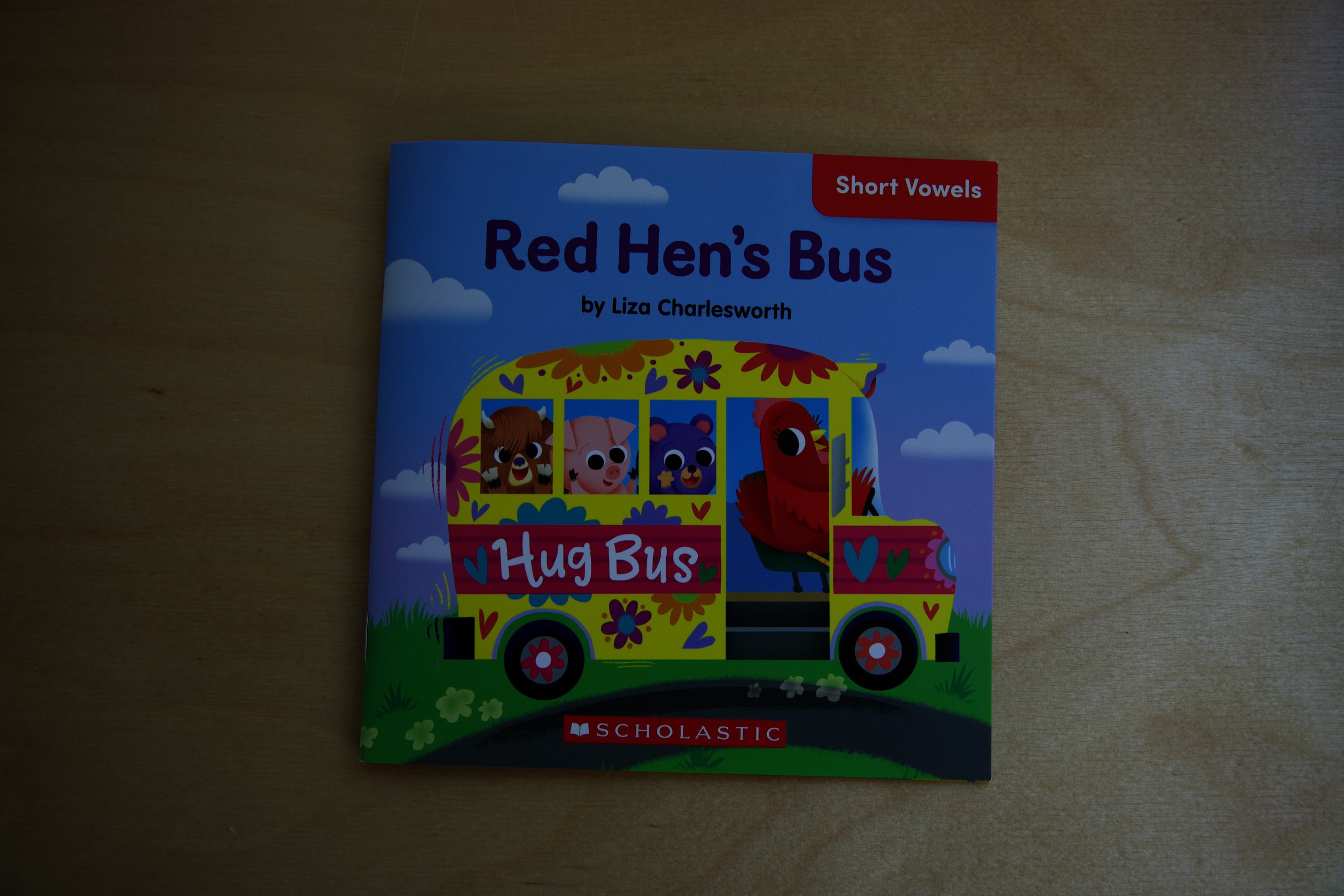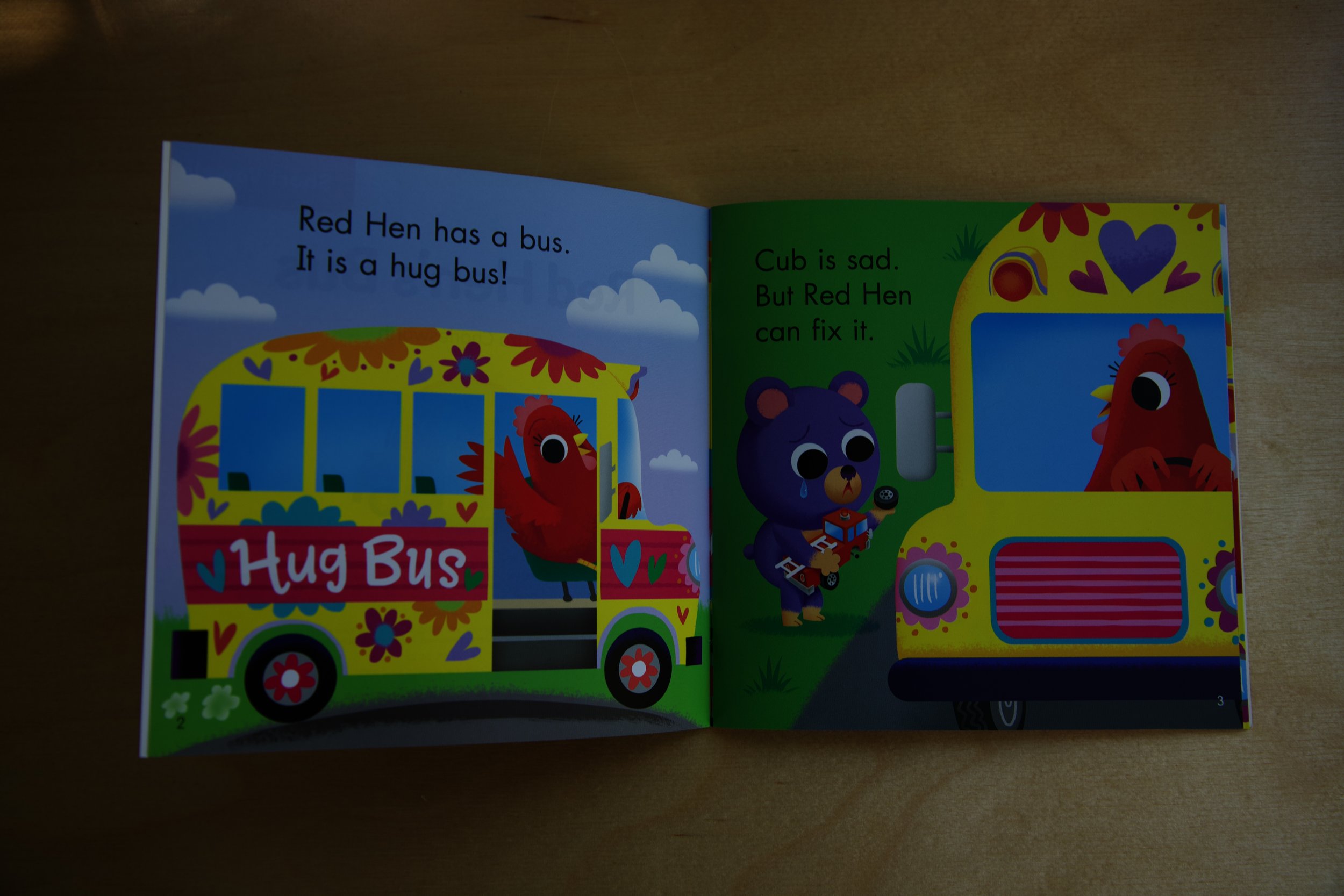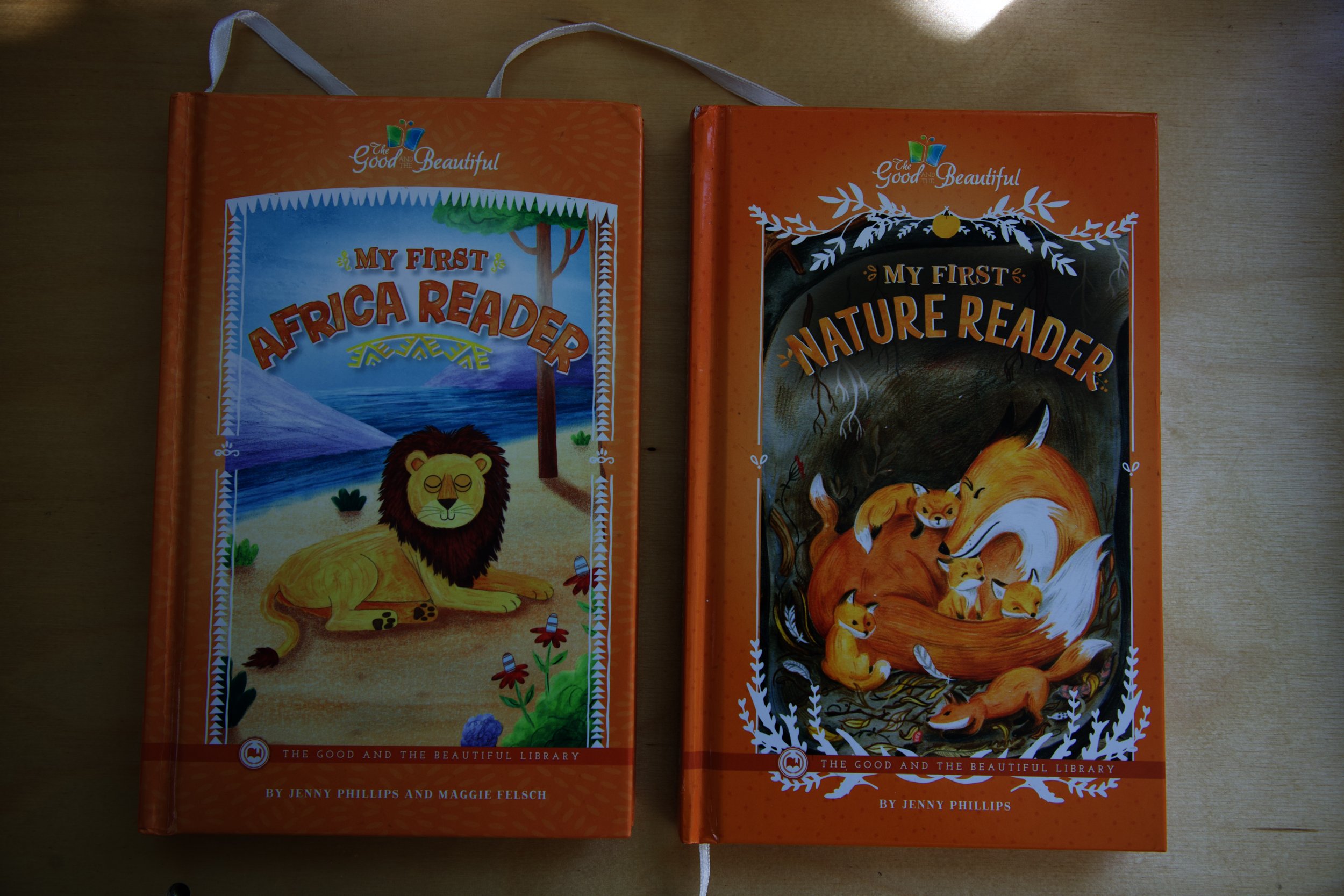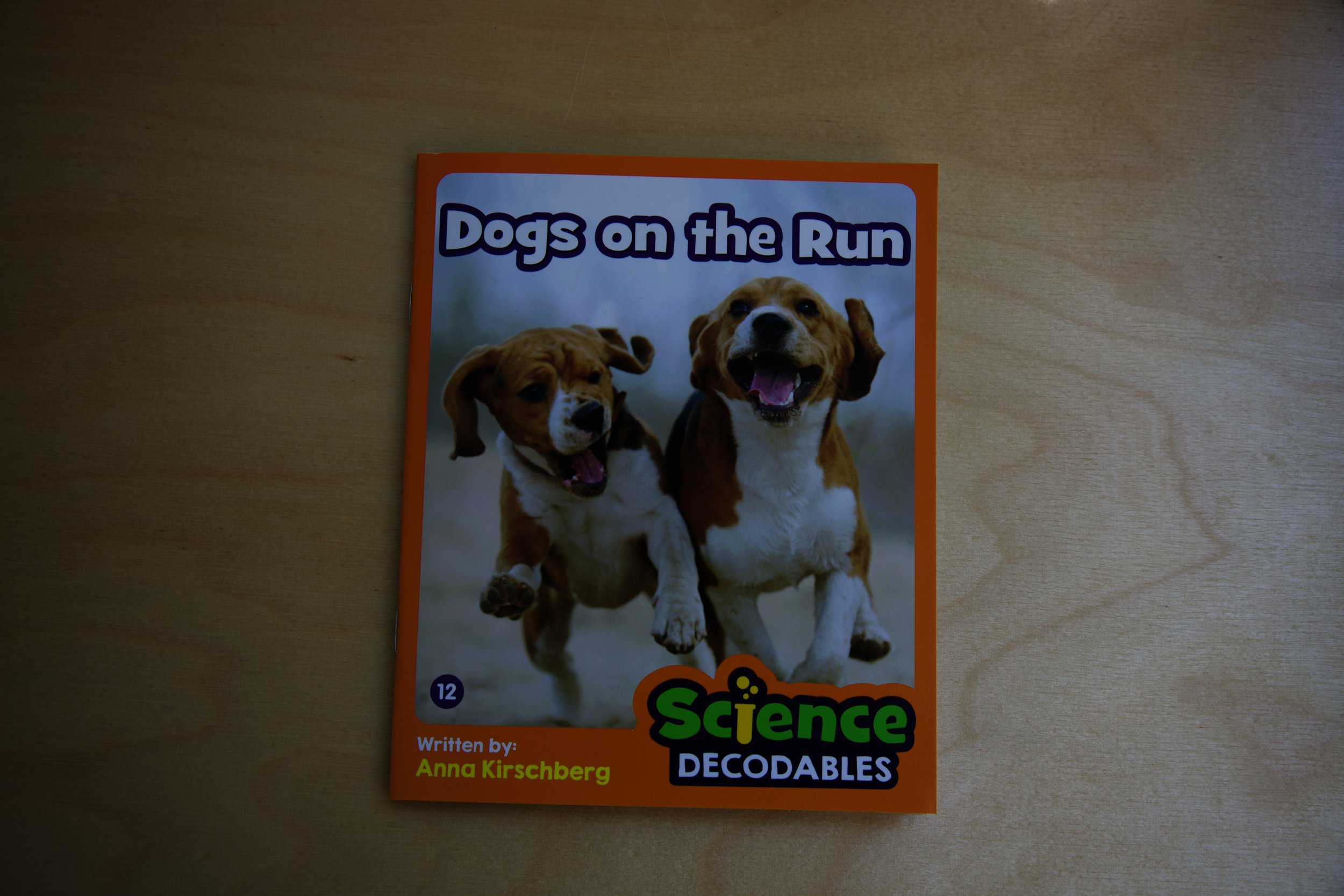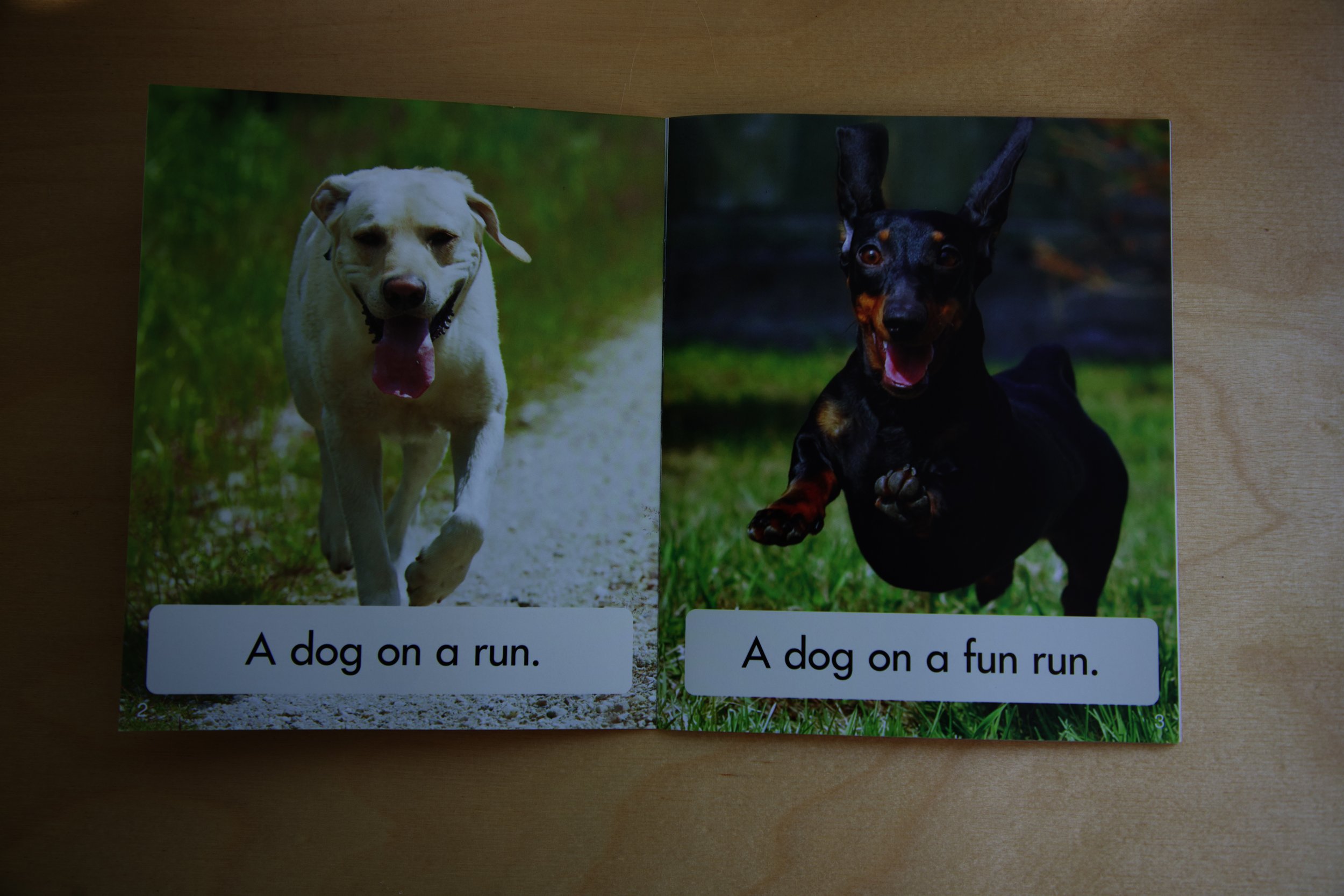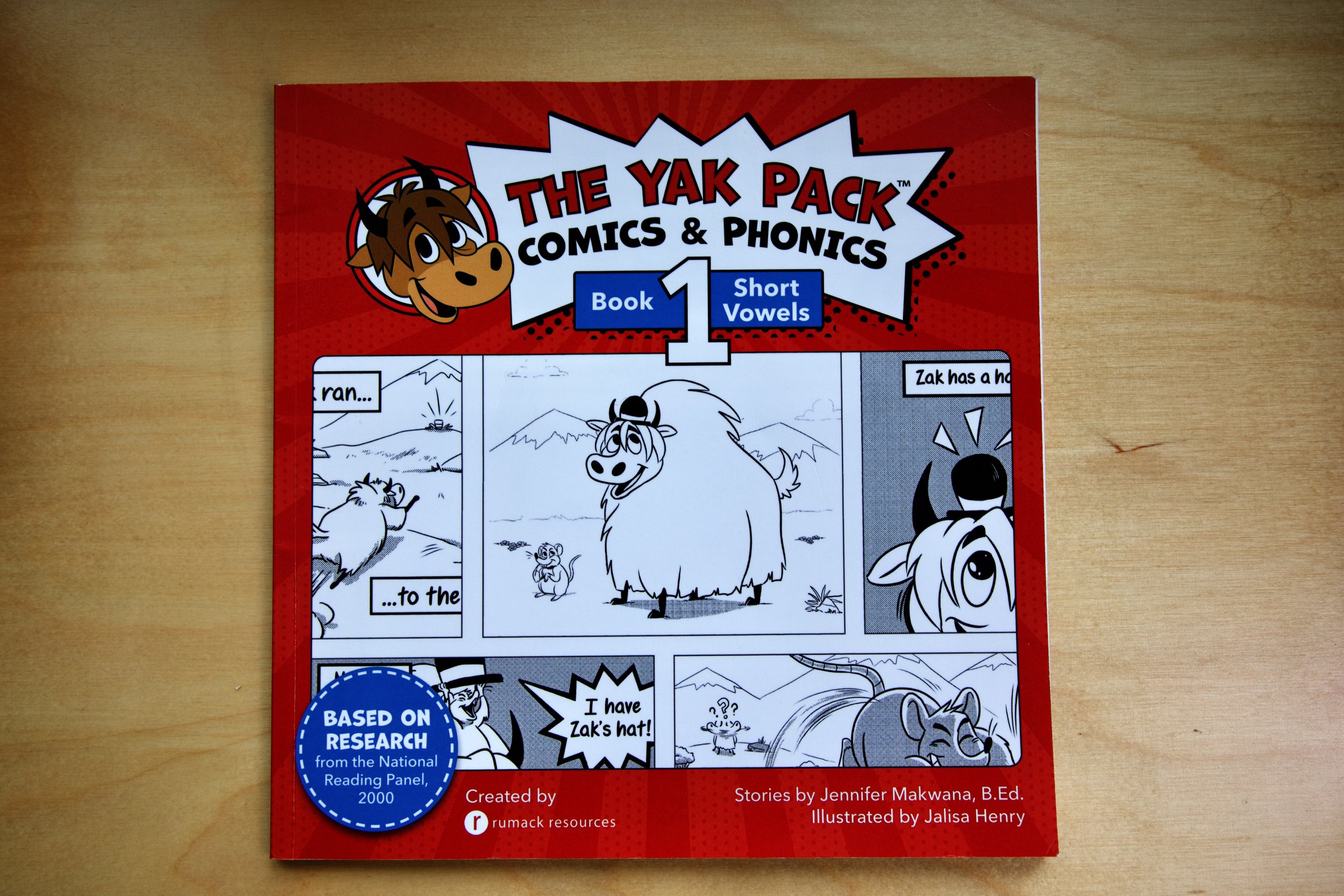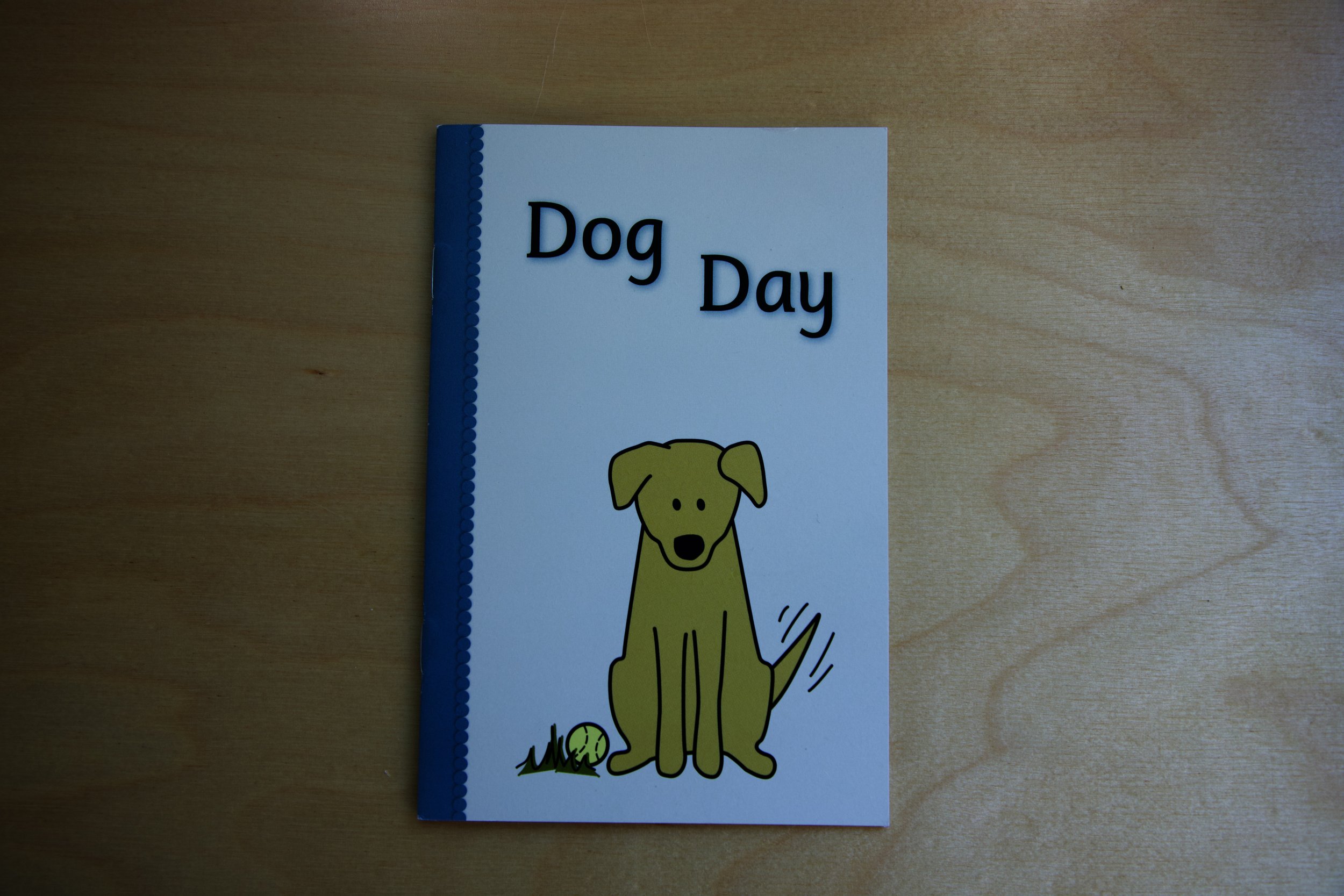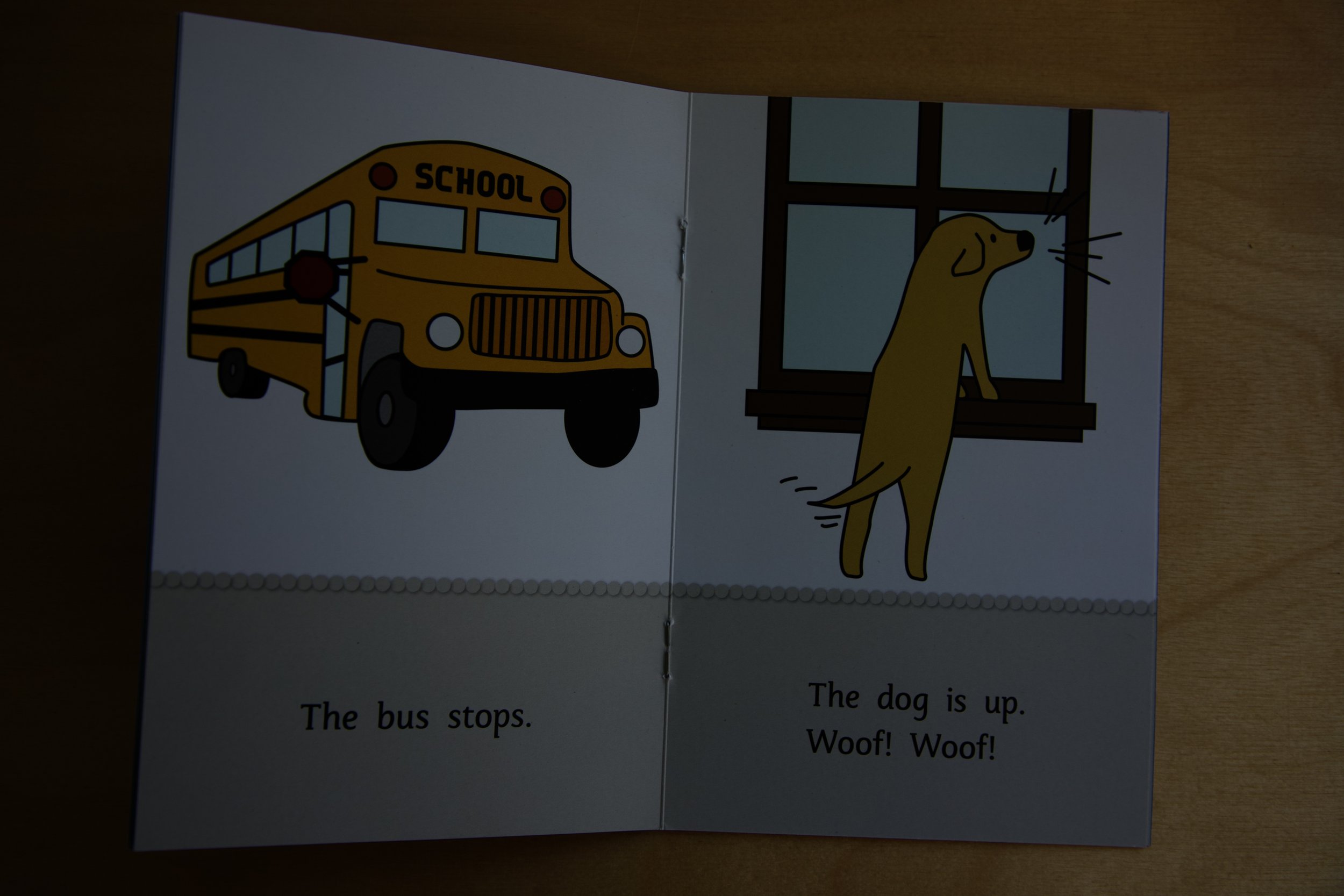Best Beginner Reader Decodable Books
This post may contain affiliate links, which means I may earn a small commission if you buy through my link but does not change your price.
Do you have a beginner reader? Have you heard of Bob books but wondering if there is something just a bit more engaging? I am here to tell you (with a resounding yes) that there is! This blog post shares some of our favorite decodable books for beginner readers!
The beginning of the reading journey is so exciting. Hearing my son first read a book to me was one of the most incredible moments of parenting. Hearing him first read a book with expression was again one of the most amazing moments. There are certain complications though when it comes to choosing books for beginner readers. Most beginner readers start out by learning the short vowel sounds as well as the most common consonant sounds on consonants that make more than one sound (i.e. most beginner readers can read gum but not gem). Later on, children will learn digraphs and blends, alternative sounds made by vowels and consonants, and vowel teams.
Many books marketed for early readers, however, have spelling patterns that children are usually not taught for months or even years. Ideally, we choose books for our beginner readers that they can decode with the skills they already have. This allows the new reader to read the words rather than guessing, looking at the picture, or memorizing.
With the rise in research on how we learn to read best and the move towards intentional phonics education, there are a lot more options on the market these days for these sorts of books. You will find they are usually labeled as “decodables” rather than beginner readers or “guided readers” (which tend to use sight words and guessing based on the picture). This means the child, with the phonics instruction they have, can decode the words. Each one should tell you which skills it works on (such as short vowels, digraphs, long vowels, etc). Many packs have a variety of books becoming progressively more challenging. You may find the early books often start with cats sitting on mats, moving towards pigs wearing wigs, foxes being told to “quit it,” and then frogs in ponds. In other words, these readers will usually start with simple CVC (consonant vowel consonant) words, often with the most common first introduced letters, and move towards the letters that are often introduced later and then blends and digraphs. Depending on the instruction your child has they may be able to read several of these books from the start (my son, for example, knew the entire alphabet before we introduced books which meant he could do any with CVC words to begin)! Most of these books also have some high-frequency or sight words. These are words that either do not follow normal English spelling patterns (think, “said”) or do follow normal English spelling patterns but are patterns the child has not learned yet (such as “go”). Different books rely on sight words to varying levels which I will discuss in my review of these books.
Here we go with our favorite decodables!
All About Reading Readers
I cannot stress how much we love these decodables. They are simply incredible and I can’t rave enough. All About Reading is a reading curriculum but these books are also sold separately. My son is on his fifth anthology of short stories from them and we have loved every one. He reads them again and again and they are just so darn enjoyable. I love how these books use engaging (but not overstimulating or distracting) illustrations to fill in any story blanks that cannot be expressed with the phonics skills the child has. For example, the first story in the first collection sticks with limited letters but instead of just using phrases such as “Sam sat on the mat. The cat sat on the mat. The cat sat on Sam” it tells a cute story of a troublesome ferret in the pictures while using simple words such as “tap” and “bam” in the text. This doesn’t lead to guessing based on the photo but supplements the story being read. The stories get progressively longer and introduce more letters, then digraphs and blends. I find many decodables really force things with the simple words available but these manage to use these words while making the stories funny, not forced. We truly laugh a lot while reading them! I also love that these books do not rely too heavily on sight words. While knowing these high-frequency words is really helpful, we want our children to have lots of practice decoding words, not just memorizing sight words. In the first set of CVC stories I think the only sight words that show up are “the”, “a”, and “of.”
The first story from the first All About Reading decodable book
The final story from the first All About Reader decodable
These are well-done decodables by someone who clearly knows Science of Reading and intentional phonics instruction! In the first set of 5, each book focuses on a particular short vowel sound. They have some simple blends such as “frog” and “black.” This means the stories will not be quite as beginner as some, but I still found them great for my son when he first started reading. They include some sight words but not too many and only words that are actually high frequency. The pictures are not too overwhelming. I love that these have an actual storyline rather than just a somewhat random uses of the decodable words. We especially liked the hen story from the first set. She gifted me the rest of her set and my son’s overall favorite is “The Plum Plot.” I think he has read this story at least 50 times. He also really enjoys “The Skate Date.” One thing to note is that the VCE stories (“magic E”, long vowel with e endings) mostly include soft c in them (race, mice, etc). Your child may not have learned this yet. I have found these a bit harder to use as my son has developed more phonics skills because the scope in the higher-level books differs more from our scope, but that’s inevitable. I like the phonics activities included at the end.
The short A book from the first series of Charge into Reading decodables
A book from the blends series of the Charge into Reading decodables
An example of the phonics activities in the back.
These Scholastic books are another option for pretty affordable decodables. The set comes with 12 books in color. I was slightly disappointed with their reliance on sight words (and even more so the occasional non-decodable, non-high frequency word). Though my son could read many sight words, within this packet of books there were a very large number and he hadn’t learned them all at the point he was reading CVC decodables. That many sight words combined with nearly all the decodable words being CVC words did not work as well for our scope of learning as some other options. I appreciate that the books are in color, though the pictures seem a bit overwhelming in these versus many other decodables. These try to make cohesive stories and do a pretty good job for the most part! They have some repetition to give practice but are not overly repetitive.
Usborne My First Reading Library
These are pricey but I very highly recommend them. They are designed to trade-off between the adult and the child, leading to better storylines. The children’s part is in larger print and is decodable. It is such a fun way for little ones to practice reading. My son loves reading them together and I find it helps his fluency to hear someone trading off reading the adult part. For awhile we were reading one or two during the bedtime routine. My only complaint with this set is that more of the books are not decodable for an early reader or in this trade-off way. This set includes a large number of books that are “early readers” designed for children to read themselves but are at the level that they have already introduced all the vowel patterns, etc. While my son enjoys these now I would have prefered not to pay for those books when I wanted decodables. When my son had not been introduced to all the vowel teams he could read the first 10 books in the series. I have never seen a phonics program that uses the sequencing they do, which I find disappointing. The first 10 books are all CVC, double constant (ll, ,ff, etc) and then -ng words (with the addition of “roll” in one of them which felt like an oversight). Then the next book jumps to including ai, ee, igh, oa, and oo spelling patterns. I wish I could find more like this that included more blends and digraphs as well as a more common introduction to the vowel patterns. I have never heard of a program introducing igh before magic E or consonant blends for example! We loved these books but I wish they offered a more sensible scope and slowly grew the part that the child is reading rather than suddenly switching to lots of patterns and then the child reading the whole book a couple of books later.
The Good and The Beautiful Books
My son really enjoys these. I think he particularly appreciates the hardcover binding in the First Nature Reader and the First Africa Reader. It feels more like a “real” book. With both of those books the first time he read them he went through the whole reader in one sitting (one has 20 stories and the other 22). Some of their content does have a religious bend to it, so be aware if that bothers you. We are religious but not Christian. The way praying is portrayed in these books is not how we pray but it didn’t bother me. It also is only a couple of the stories. I love the watercolor illustrations. The stories are very short and simple. They also have the decodables that come with their course available as a free download online (as well as their whole course for free online). You could bind these yourself or let your child read them on your computer. We have the second nature reader as well and it is also great once your child is at that stage.
The first story from the nature reader
The final story from the nature reader- each story starts with a page of what skills are worked on in that story
These bill themselves as “science” decodables. In truth, they are incredibly simple and children will probably not be learning any real animal facts from them. However, the real animal pictures are nice and these are very easy starter decodables. They have some sight words but most of the words are decodable. There was only one book I removed from our set before making them all available to my son because there was a word that I didn’t consider easily decodable for a beginner reader (carrot- I believe that varies by accent though and these books were published in New Zealand). One slight pet peeve though- not all the sentences are complete sentences despite being written like they are.
These books have more information in them and are going to be more challenging than the science decodables above. This one actually gives some interesting nonfiction facts a child may not know. The set goes through CVC words and then introduces blends, open syllables, contractions, etc. This means these books will last longer than ones that are only covering CVC words. We now have the second set focusing on long vowels and my son has enjoyed these a lot. The real pictures are engaging while not overwhelming and lead to some good conversations. My one gripe with these are their “stretch words.” Many of the books have some non-decodable, non-high-frequency words that they label as “stretch words.” Some examples include words such as spider, white, score, and skate. Many of these can be decoded once long vowels have been taught but this set is set 1 and is meant to be for short vowels. It’s not the end of the world to have to help with some words, but it is not my preference and I removed the books that did not follow known patterns for my son. Now that he can read those words though it is nice to have some more variety.
These comics are so fun, especially if you have a child who likes comics or has an older sibling who does. They use some sight words and lots of decodable words, focusing on a vowel sound at a time. My son didn’t know what comic books were before reading these but I still found them very fun! People with older beginner readers also report their children loving these.
I can’t write a post about decodables without mentioning Bob books. These are the classic decodables and the first one was the first book my son read. The best thing about these is that they are incredibly affordable and limit the use of sight words. The vast majority of words are easily decodable. They follow a sequence of introducing letters with more letters introduced in each book. The pictures are simple and not very engaging but I assume that keeps the price down. I don’t love how easy it is to guess text based on photos in the early books. I also find these really lack much for a cohesive story. When my son read some of these I found he struggled more than with other books with far more complex words. I think this is because sometimes the sentences sound very unnatural in order to use the proper letters/words. My son would read the words but found himself confused trying to make sense of the sentence. I get it because I find them confusing at times too! The sentences don’t necessarily connect in any real way to make a story and add unnecessary words that make them convoluted. Yes, that does force children to actually decode the word rather than guessing but since reading comprehension is a big aspect of reading I don’t love this. We skipped these after the initial few books. I know that’s an unpopular opinion though and many people love Bob books.
I am including these because they have been recommended to me quite a bit, but I am not sure if they should be on the list. I really really wanted to love these. These are popular in Montessori circles and I get why: the illustrations are nice, the stories are realistic, they’re sweet books made by a trained Montessorian. My issue with these is I absolutely cannot figure out their scope of phonics instruction. Even the first-level books have words with phonics patterns that are not taught to early readers. Unlike most of the books here there is no page telling what words are included or what skills are being highlighted. I am not sure these really can be considered decodables if I am being honest, though this surprises me as Montessori does take a phonics-based approach. By the time my son learned all the phonics patterns needed for most of these books, the books were far too easy for him. The second-level ones had a bit more “meat” to them and still had the mix of different phonics patterns. My biggest concern is hard to decode words that are easily guessed based on the picture. For example, when my son did not have the phonics skills to decode raccoon (double O), I knew he could have guessed it based on the picture while reading the book that features one. I am less worried about this now as he has gotten better at using context clues within the text, but guessing based on the photo is not a skill I want to encourage in a very early reader. The author is a Montessori teacher and I have a feeling these books were made for her own classroom. Miss Rhonda is a character in one of the books we read and that is definitely not a name I would choose for beginner readers.
Final Thoughts
This blog post has shared my favorite beginner reader decodables but I have a couple more to mention. One I have come across time and again is the Dash into Reading series. I cannot report on them because I do not have them but I wish I did! I love the cute old-fashioned style illustrations. But… oh my goodness, these are pricey! The set of 10 paperback books is $69! I, personally, like to have quite a few decodables to allow my son lots of opportunities to read books (he reads a lot) without just memorizing the stories. I can’t justify spending that much money on a set. Not to mention that children quickly develop more phonics skills and outgrow those very beginner readers. I do keep hoping to find some at the thrift store though.
Another great option when it comes to decodables is printable books. Many of these decodables do not have particularly fancy binding anyway and you can print at home. I found some nice ones on Etsy that are printables. These include the classic Montessori color series of books, as well as some other sweet and nicely illustrated stories. Canva also has free printables and with a little googling, you can find some others as well. I also made some of my own stories for my son so he had books about his own life! Lovevery also released their reading set fairly recently. I purchased level 3 (advanced vowel and spelling patterns to chapter books) and my son loves these stories. I am sure the level 2 ones, which have basic CVC reading and blends, are great too. They had not come out when I originally wrote this post though.
I will also note that, as I alluded to in a couple of these reviews, beginner reader decodables can be a bit painful to read. Often they have sentence structures or word choice that doesn’t reflect how we usually speak or write. I will admit I have mixed feelings on this. I do think it is good in preventing simply guessing. It forces a child to really read the words. On the other hand, this can be painful to read and I worry for some kids it leads to not comprehending as well. I do think figuring out words from context is an important skill as well. There are plenty of times as an advanced reader I figure out a word based on the greater context of the sentence. I found All About Reading in particular mostly avoided the strange sentence structure. Most, however, particularly shorter stories, end up with some odd words and wording, especially in some of the more advanced vowel patterns. I think decodables are really important in the early stages of reading though. Now my son is venturing into more authentic texts and it has, without question, exploded his love of reading.
The shelf pictured here is Sprout Kids (code OnTheWay10 for a discount).

